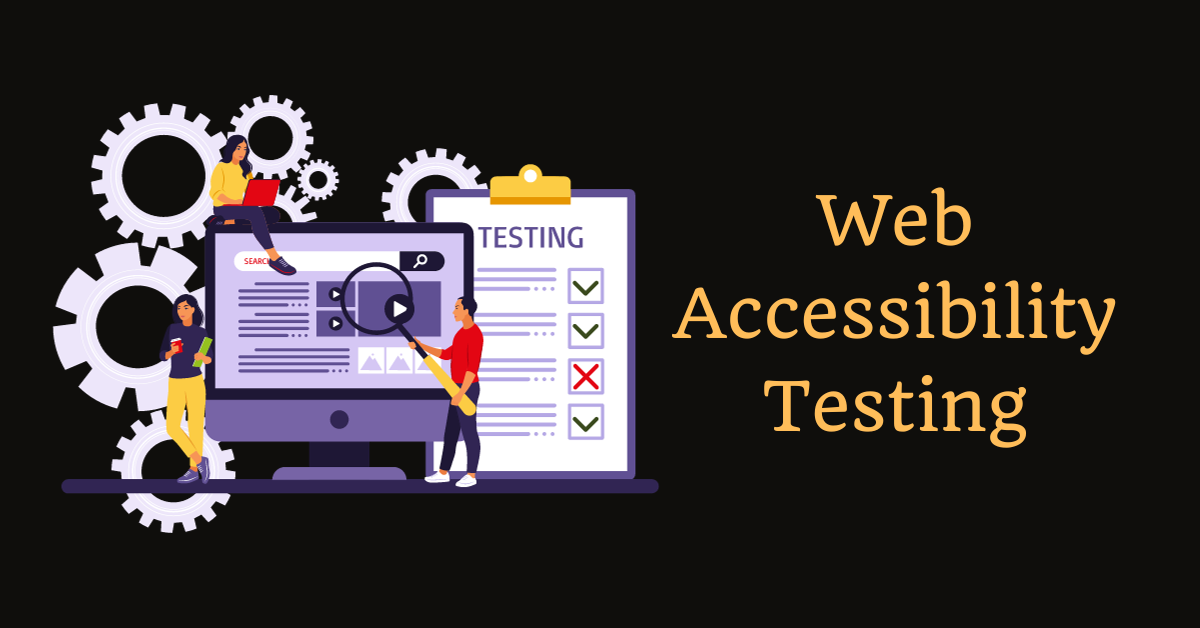Imagine navigating a complex financial dashboard only via keyboard shortcuts. Frustrating, wouldn’t it? Now imagine millions of users facing similar struggles due to website inaccessibility. Web accessibility testing bridges this gap, ensuring everyone can experience the web’s full potential, regardless of ability.
This blog will serve as your comprehensive primer on web accessibility testing, and equip you with the knowledge and tools to build inclusively designed websites. Whether you’re a seasoned developer or a curious entrepreneur, accessibility is no longer a niche concern; it’s a strategic imperative.
Why Embrace Accessibility?
Accessibility isn’t merely a checklist to meet legal requirements; it’s a cornerstone of ethical design and equitable access. Nearly 1 billion people globally experience some form of disability, and accessible websites empower them with information, services, and connections. It’s about building a digital environment that allows everyone to grow and thrive.
Moreover, accessibility isn’t just the right thing to do; it’s smart business. Accessible websites boast higher SEO rankings, enhanced user engagement, and reduced legal risks. In today’s competitive landscape, embracing accessibility isn’t just a moral obligation; it’s a key driver of business success.
Your Accessibility Testing Arsenal
A vast array of tools awaits your accessibility journey:
- Screen Readers: Tools like NVDA and JAWS become your virtual allies, “reading” web pages aloud for visually impaired users.
- Color Contrast Checkers: Ensure optimal readability with tools like WebAIM’s Contrast Checker, preventing frustration for users with visual contrast sensitivities.
- Keyboard Navigation Testers: Tools like WAVE’s Keyboard Accessibility Checker guarantee your website is fully navigable without a mouse, catering to users with motor impairments.
- Automated Scanners: Utilize comprehensive solutions like SiteImprove and Accessibility Analyzer to crawl your website and identify potential accessibility barriers– your automated accessibility inspectors.
Remember, no single tool is a silver bullet. Employ a diverse testing arsenal for a comprehensive audit.
Website Accessibility Testing
Now, let’s delve into the practical aspects of testing:
- Analyze the Architectural Framework: Evaluate your website’s overall structure. Is navigation logical and intuitive? Can users access essential functionalities using only the keyboard? This forms the foundational pillars of an accessible edifice.
- Scrutinize the Code: Dive deeper into the technical details. Verify proper HTML tags, clear alternative text for images, and accessible form elements. This is where your technical prowess shines!
- Content Craftsmanship: Remember, content is king (and queen, and everyone else)! Ensure your content is clear, concise, and well-structured. Use descriptive headings, avoid technical jargon, and offer alternative formats like transcripts for audio/video content. Words have the power to include or exclude; wield them wisely.
- Continuous Iteration and Testing: Accessibility testing isn’t a one-time event; it’s an ongoing journey. Regularly test with diverse tools and, most importantly, real users with disabilities. Their lived experiences offer invaluable insights for continuous improvement.
Resources, Challenges, and Rewards: Shaping a More Inclusive Web
This path can be strewn with challenges, from complex technologies to budgetary constraints. But fear not, accessibility champions! Resources abound:
- Accessibility Guidelines: WCAG (Web Content Accessibility Guidelines) serves as your North Star. These international standards provide clear best practices for building accessible websites.
- Communities and Support: You’re not alone! Embrace the knowledge and guidance offered by online communities like the W3C’s Web Accessibility Initiative (WAI) and accessibility conferences like CSUN.
- The Intrinsic Rewards: Every user you reach, every barrier you dismantle, is a victory. Building accessible websites isn’t merely about compliance; it’s about creating a more equitable and inclusive digital landscape.
Conclusion
We stand at a pivotal juncture. Technology has the power to connect and empower, but only if we design it with empathy and inclusivity at its core. Remember, a web accessible to all is a web for all.
Now that you know the role that accessibility has, you are well on your way to test your websites relentlessly, and watch them evolve into beacons of inclusivity. You can therefore create a digital world where everyone can navigate with confidence, participate fully, and experience the boundless possibilities of the web.


